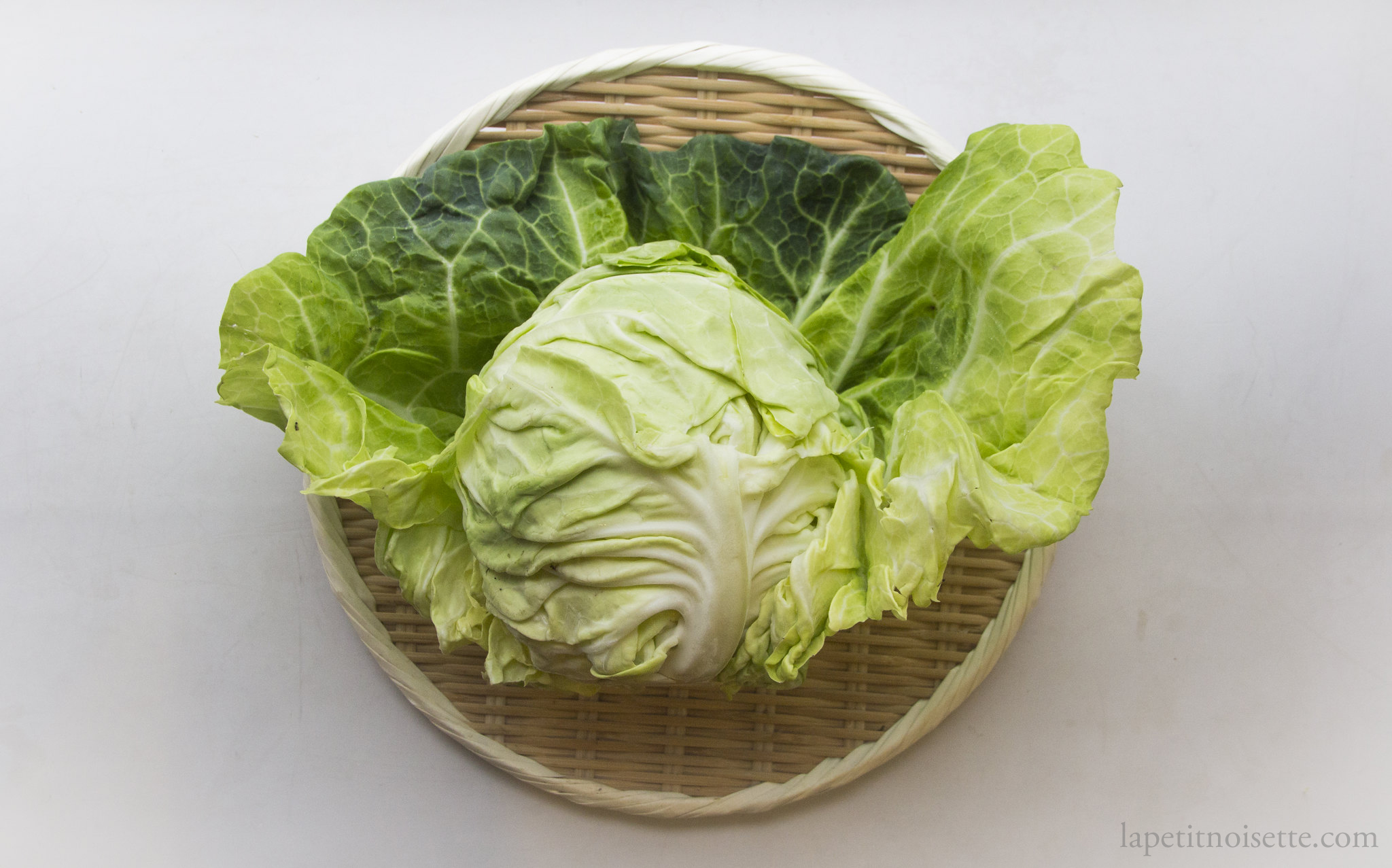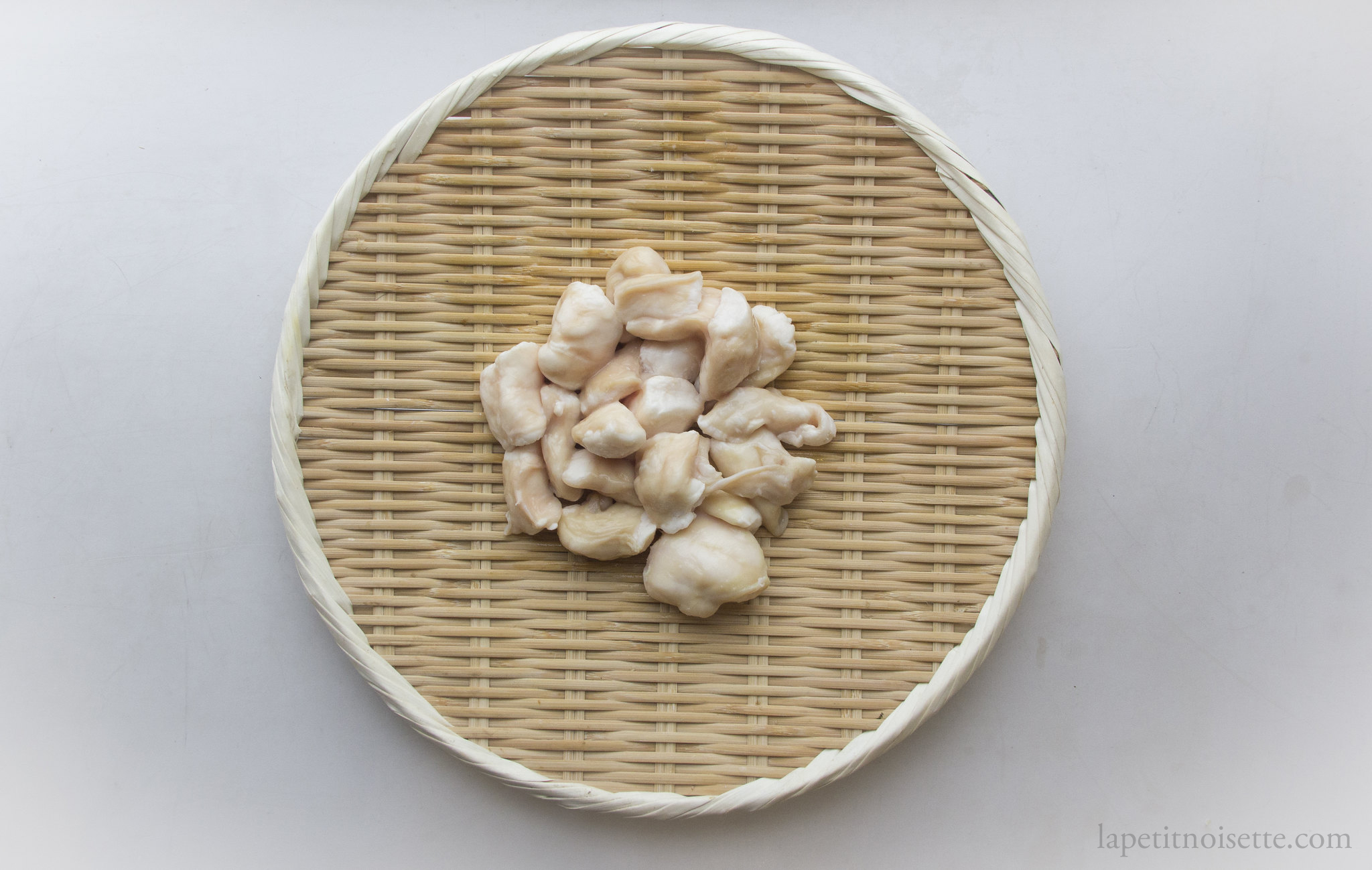
Motsunabe is a Japanese stew or hotpot made from pork intestines that originated in Fukuoka and is an example of Northern Kyushu cuisine. Now easily available throughout Japan, the base of the soup comes in many different styles such as soy sauce or miso. The word “motsu/もつ”in Japanese refers to the edible internal organs (offal) of cows and pigs. Whilst this includes the heart, tongue, livers and kidneys of the animals, Motsunabe is usually made exclusively from pork intestines. Another word for offal in Japanese usually used in the Kansai region is horumon (ホルモン), which is commonly mistaken in english because it is the same word for hormones, and thus translates into hormone stew!

This dish is typically served with Chinese cabbage, bean sprouts, garlic chives, garlic chips, chilli flakes, and burdock root. Burdock root, or Gobo (牛蒡/ゴボウ). After the stew is eaten, the remaining soup, which would have largely evaporated now, is typically mixed with rice or udon noodles and eaten, sometimes with the addition of a raw egg.
Types of offal/intestines used in Motsunabe:
Compared to the typical cost of meat in Japan, offal tends to be relatively cheap which is why it is eaten so often. Among the different kinds of intestines themselves, the prices do vary. Below are the 3 kinds of intestines you can find in Japan.
小腸/Small Intestine
The small intestine is the cheapest cut of them all, as it is the most chewy and tough part of the intestine, with quite a high fat to meat ratio. It should be cooked for slightly longer to lessen the chewiness.

The large intestine is the most premium offal you can use in Motsunabe, and is usually three times the price of the small intestines. It has just the right fat to meat ratio, and has a soft and tender texture that melts in your mouth.

直腸/Rectum
The rectum, which most of us won’t consider as part of the intestine, is actually considered the tail end of the intestine and is also considered a better cut offal as it has a nice chewy texture without being too tough. It rarer compared to the small and large intestine, and is more expensive than the small intestine. It is occasionally cheaper than the large intestine, but mostly the same price.

The miso used in this dish is white miso (白味噌). This is because white miso is less intense and sweeter, which doesn’t over power the mild taste of the intestines. For a soy sauce version, replace the 20g of white miso with 25ml of soy sauce.

Japanese Offal Stew Recipe
- 400g of pork intestines of your choice
- half a Chinese Cabbage
- 50g of bean sprouts
- 1 bunch of garlic chives
- 2 sticks of burdock root
- 3 Garlic Cloves
- White sesame seed to your liking
- 1000ml of Dashi
- Dried Chilies
- 30ml of Mirin
- 5g of Sugar
- 5ml of Soy Sauce
- 20g of White Miso
- Set a large pot of salted water to boil.
- Blanch the intestines for 20 to 30 seconds, drain and set aside.
- Shred the Chinese cabbage into thin strips.
- Peel the burdock root and slice into thin strips, or peel into thin slices using a peeler. Soak in water to prevent browning until use.
- In a separate pot, mix the soy sauce, Dashi stock, sugar and Mirin together.
- Add the miso into the pot by dissolving it into a strainer in the pot, so that any solids remaining can be easily removed.
- Add in the intestines and boil for 10 minutes.
- When cooked, add in the cabbage and bean sprouts.
- Slice the garlic and dried chilies into thin strips and the garlic chives into long strands.
- Top the stew with the garlic, chilies and white sesame seeds.
- Cover and cook until the cabbage’s texture is to your liking.
- After the contents is eaten, add in some soba noodles or rice to finish eating the dish.

Notes:
- The intestines are blanched to clean them and remove any offal smell. Blanching them for too long will render the fat, with is important in the final stew give a creamy texture.
- White miso tends to have bits of solid soy beans or barley remaining, which is why you should dissolve your miso in a strainer, to catch these unwanted bits.
- For a soy sauce version, replace the 20g of white miso with 25ml of soy sauce.
- Soaking the burdock root before or after peeling helps to mellow its taste of it if you think the taste of burdock root is too strong. This step is optional.
My student at a primary school typed this into my laptop whilst I was working on this recipe and I thought I’d just leave it here. This post is dedicated to him:
chiliyyhygfggtrttyrh3eij;9epokoi8ywweujeedehw6w3eessyerbdsfi8d7uatxjvxmvdfhfhfhvhfyhfchfduhdydghdxhdshgdxysysywytwataytwaze5xrtwhedf4hefkfjdhshayhsusjsmxmxzxmk
Hi Rob,
You send me this recipe. I’m not cooking anymore so you enjoy it for me. Grandma.
Wonderful recipe. I was recently in Okinawa where I enjoyed Mitsubishi-ponzu, basically prepared motsu with a little broth and ponzu, in a bowl. I’ll make this soon